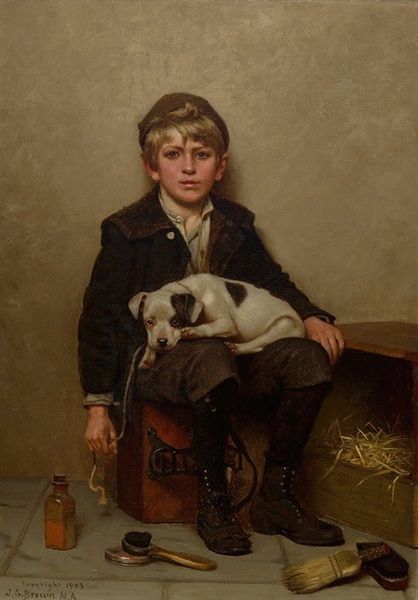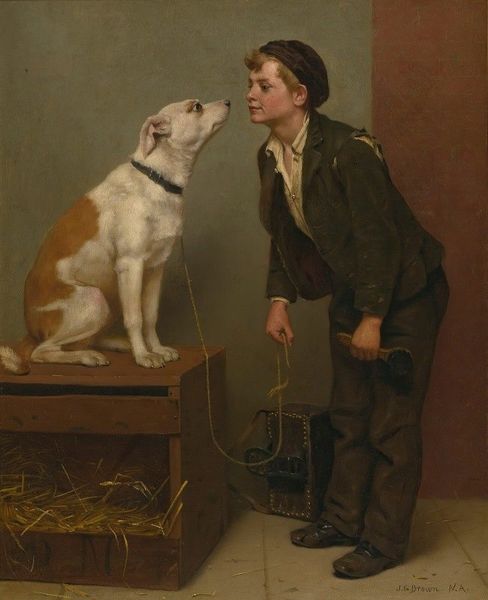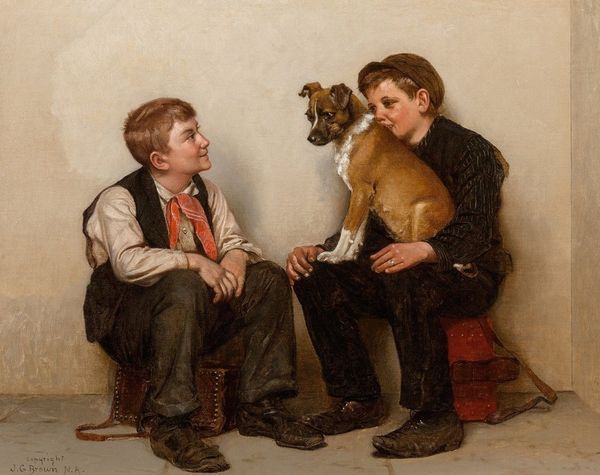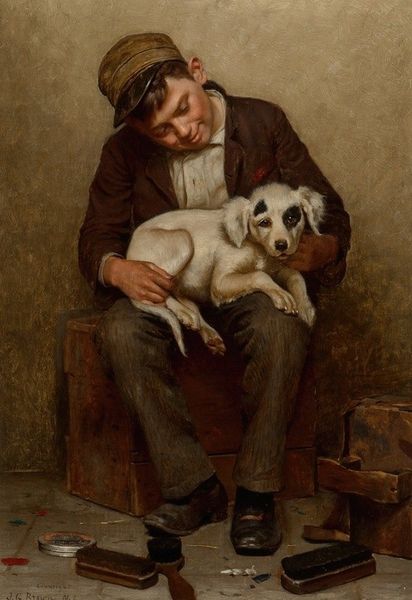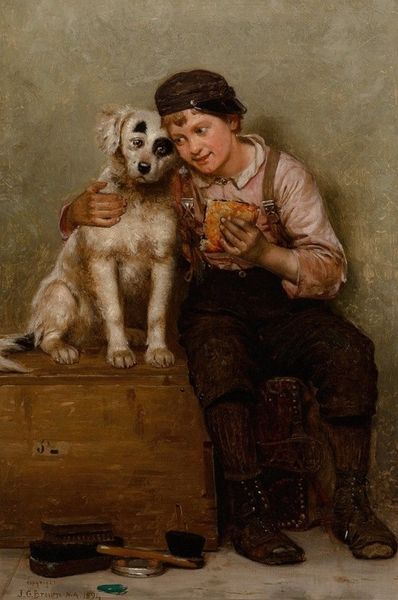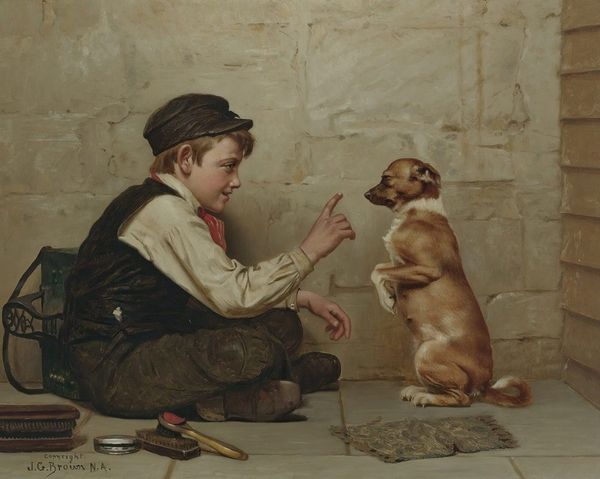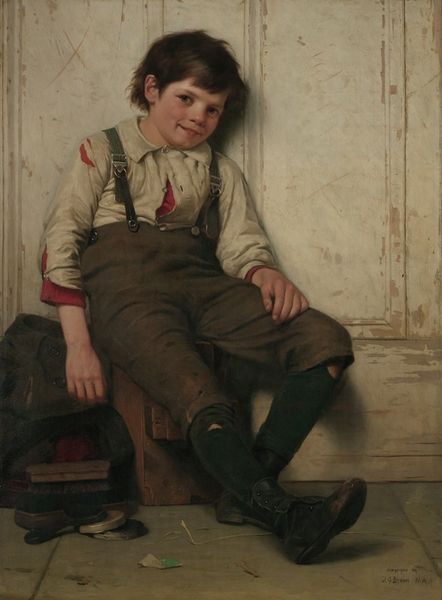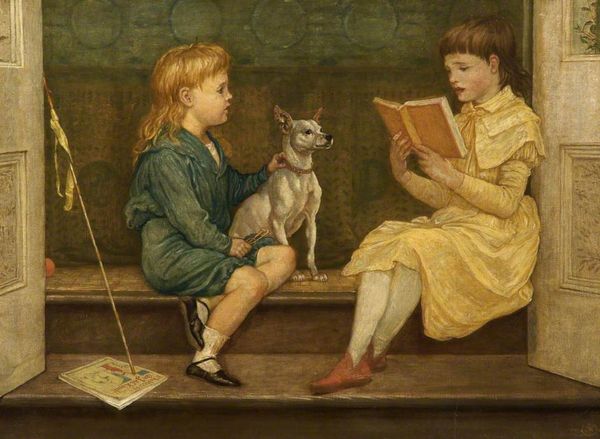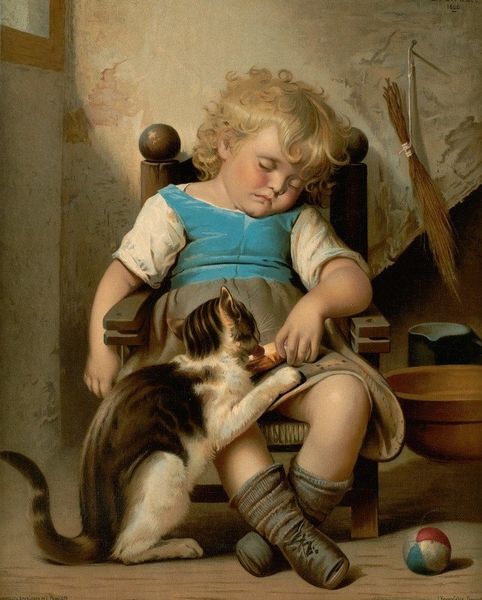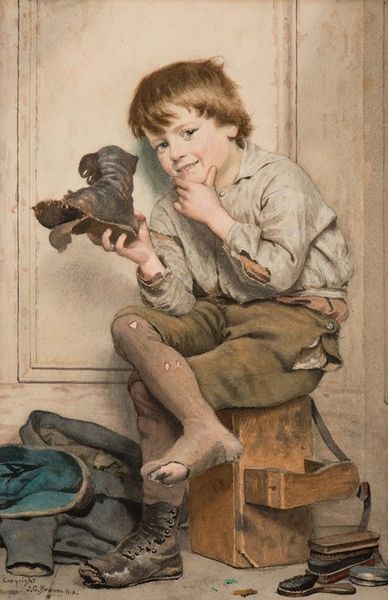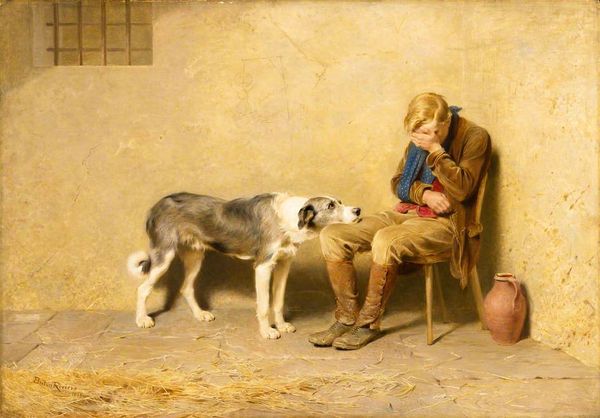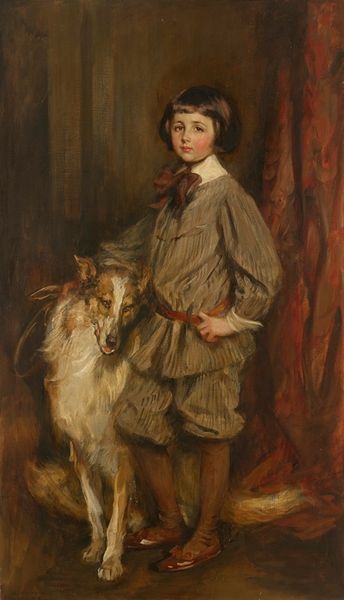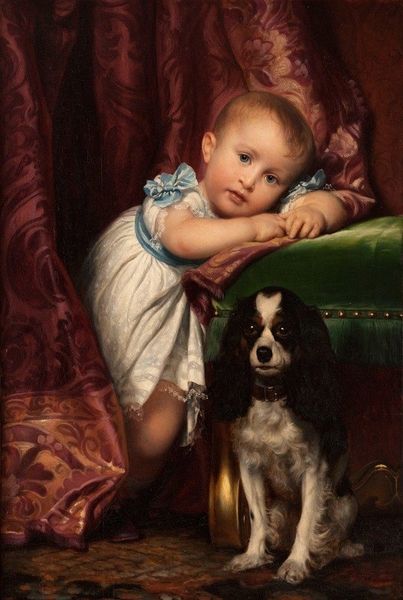
Copyright: Public Domain: Artvee
Editor: Here we have John George Brown’s “A Confab,” painted between 1902 and 1903. It’s an oil painting showing a boy and a dog seemingly in conversation. I’m struck by how intimate the moment feels. What do you see in this piece? Curator: I see a fascinating commentary on societal values embedded within what appears to be a simple genre scene. Consider the title, “A Confab,” suggesting an important discussion. Brown was known for depicting the lives of working-class children, often romanticizing them, and the sentimental focus served a distinct purpose. Editor: How so? Curator: By presenting an idealized view, Brown perhaps sought to elicit sympathy and support for these children, influencing public perception. Also, it’s relevant to note that at the time, organizations like the Children's Aid Society were actively involved in child welfare. How might a painting like this have played into their narratives? Editor: That’s a perspective I hadn't considered. It goes beyond just the surface image, doesn’t it? The way it could influence sentiment and potentially policy changes around child welfare. I had been purely considering artistic skill, rather than considering the contemporary culture when the art was created. Curator: Precisely. The choice of subject matter, the emphasis on innocence, even the artistic style – all become part of a larger cultural dialogue. Editor: This changes how I look at genre paintings now. I appreciate the way context influences a painting's message, and vice versa, the art impacts socio-political views. Curator: Absolutely. Paying attention to social history offers powerful new ideas regarding a work. It transforms our interpretation.
Comments
No comments
Be the first to comment and join the conversation on the ultimate creative platform.
